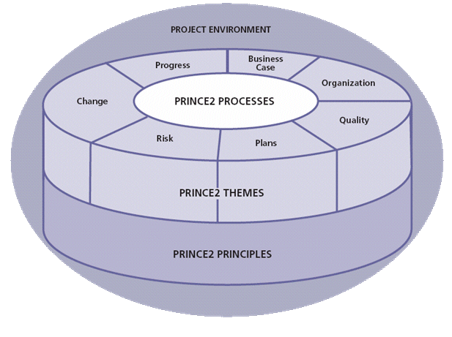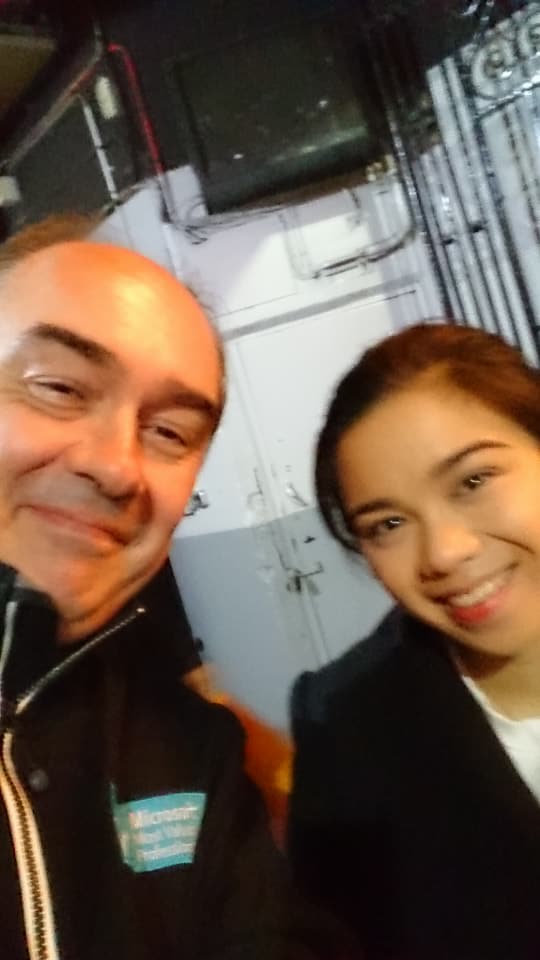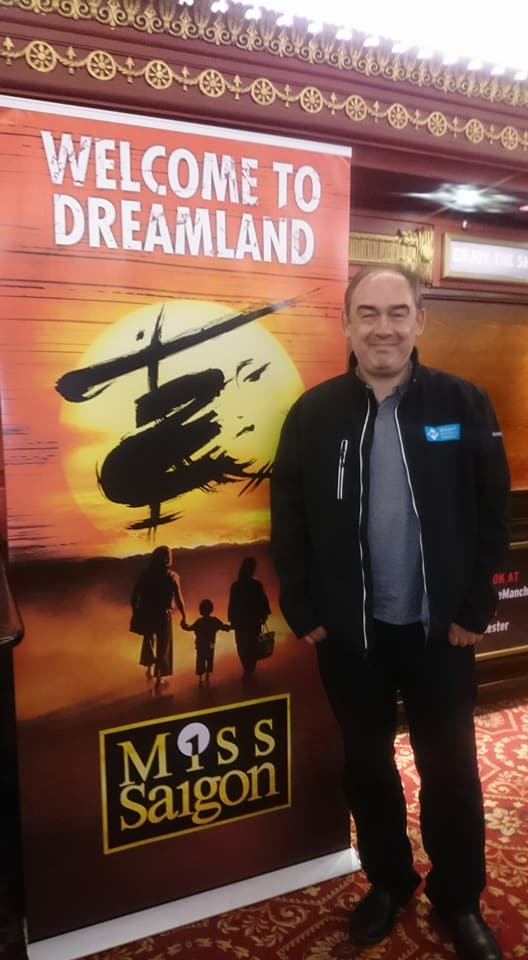Becoming a PRINCE2 Practitioner

My days cutting code certainly aren't over, but I do increasingly manage larger scale efforts involving multiple coders and consultants. The best recent example of this was upgrading a SharePoint 2010 farm to SharePoint 2016. This is documented elsewhere but basically involved the work of ten different professionals over a period of months. (If anyone tells you it's a one person job I wouldn't put the resulting farm into Production if I were you!)
The internal project management methodology was somewhat based on PRINCE2 but the lines of communication were somewhat muddled and decision making open to meddling from inappropriate parties. [Yeah I know there's clearly a bigger story here, buy me a beer and I'll tell you the details ;) ]
So to cut a long story short I decided to learn how to do PRINCE2 properly and become a PRINCE2 Practitioner. [The premium version of the certification that shows you can apply this in the real world]. I found a company in the UK that was suitable and with several locations to choose from. In the end I opted for Manchester because... well the hotels were cheaper than London or Edinburgh. (Plus the weather was much worse but hey).
You might know that PRINCE2 is the second major version of the methodology and that PRINCE stands for 'PRojects IN Controlled Environments' (though this is a new acronym, the original was much less catchy 'PROMPT II IN the CCTA Environment'). It was created by the UK government to introduce some rigor into their projects, and is now owned by an org called Axelos (which is an anagram of 'ox sale', unintentionally I presume). Though I'm interested in it as a way to deliver software projects it can be applied to any project from building a bridge to developing a new kind of dental floss!! Also Agile methods can be accommodated in PRINCE2. There's even a flavor called PRINCE2 Agile Practitioner which I'm looking into.
It soon became apparent that I'd got myself into a lot of work. After booking the course I received a 60 page booklet with a note asking me to work through the text and exercises before the classroom part even started. That got me going on the basic concepts.
In the classroom the shock and awe continues as you're given a 300 page book Managing Successful Projects with PRINCE2® 2017 Edition whose content you're going to need to become very familiar with, plus a 200 page course booklet. It's made clear that you'll have homework every evening.
I'm not going to attempt a full explanation of the Methodology here, but here's a very high level view with about 299 pages of the manual missing;
A project manager manages the project (surprise!). In the words of Highlander "there can be only one!".
Specialists deliver products, be they software or widgets. Controlled by Team Managers.
A Project Board remains available to review progress and decide on issues when necessary.
PRINCE2 is made up of seven Principles, seven Themes and seven Processes.
The Principles are;
- Continued Business Justification [If the project ever loses its Business Justification why are you doing it?]
- Learn From Experience [Record lessons learnt and use that knowledge]
- Defined Roles And Responsibilities [Make it clear who does what]
- Manage By Stages [Stages allow monitoring and control]
- Manage By Exception [Let the PM get on with it unless tolerances are breached. No micro-management]
- Focus On Products [At the end the project is about delivering a product not paper tigers creating unneeded documents]
- Tailor To Suit The Project Environment [Orgs are different, tailor to suit]
Themes are applied throughout the project. These are;
- Business Case [Justification is recorded and constantly monitored]
- Organisation [Roles are defined and apportioned]
- Quality [Quality criteria must be agreed and checked]
- Plans [Psst! They'll be asking for documentation next!!]
- Risk [Risk must be carefully managed to avoid project derailment]
- Change [Inevitable and must be managed]
- Progress [Hopefully we're making some, keep an eye on it]
Finally, the Processes denote various pieces of the project in action;
- Starting Up A Project [Appoint project team, create a project brief]
- Initiating A Project [Business case is completed and Project Initiation Documentation put together]
- Directing A Project [Project Board oversees the project until closure]
- Controlling A Stage [How the PM manages Stages including how work packages are authorised and distributed to Team Managers]
- Managing Product Delivery [Describes interaction between the Project Manager and the Team Manager by placing formal requirements on accepting, executing and delivering project work.]
- Managing Stage Boundaries [How to transition from one stage to the next]
- Closing A Project [A formal process to close the project, evaluate what it achieved, hand over products to relevant parties, and identify follow-on actions]
Mix it all up in a cocktail shaker and you have a successful project... we hope.
The second morning of the course I woke up with an image of the Processes diagram (showing where in the project these processes occur) in front of my eyes. The course material was clearly settling into my grey matter.
Day 3 we had our Foundation exam. This is a requirement to go on to the Practitioner exam. It's a closed book exam, a test of general understanding. The blurb states that being Foundation would help you work on a PRINCE2 project but not enough to actually be the Project Manager. It was an hour long with 60 questions and the pass mark is 55% (33 correct). To be honest I was buzzing with the material by now having lived and breathed it (including the evenings) for a couple of days. I finished in about 30 minutes with what turned out to be a solid pass.
The rest of the course would provide preparation for the Practitioner exam where a more thorough understanding of the PRINCE2 method and the manual would be essential. However this was the first night we didn't have any homework. So I took a night off. :)
A bus had driven past when I was crossing the road, sporting a huge advert for Miss Saigon at the Palace Theatre which was five minutes away from the hotel. This happens to be my favorite musical so I was sold.
The show was fantastic! Afterwards I hung around the stage door to congratulate the cast. For some reason everyone had evaporated by the time the leading lady Joreen Bautista (who played Kim) came out. She did give me a slightly nervous look since she's looking forward to going home and some software nerd is waiting outside. So I decided to keep it brief. After congratulating her on her performance I asked if she'd mind being in a selfie which she kindly assented to, then I wished her a good evening and was on my way, back to the PRINCE2 books.


The key to the Practitioner exam is to know your manual! You can't possibly memorize the 300 pages but this exam is open book. The questions are much trickier but knowing the manual you can look up guidance for the really tough ones.
My critique of this is that your level of English has to be pretty fantastic to understand the nuances of some questions. If English were a second language it might be a struggle, though apparently Axelos are producing versions in other languages imminently.
They prefer you to do the Practitioner exam online now. I booked a date a few days after the course. A proctor uses your webcam to ensure that everything is correct with you and your surroundings. The exam is 150 minutes, 60 questions with a pass mark of 55%.
Frankly I had been nervous about the exam as Axelos (the owners of PRINCE2) only release two mock papers. I was scoring a pass mark on those, but it didn't have a huge margin of safety.
Happily for the real exam things came together nicely. I had been coaching myself how to use the manual to best effect. I kept a note of troublesome questions to revisit as I went through. Using all but two minutes of the time allowed I submitted my answers and... had got a decent pass mark - better than in the mocks!
Now I'm in the process of sorting out membership with Axelos as they have a heap of great resources from guidance to document templates that should be a big help.
Looking forward to the next project where I can be confident I'm applying the methodology correctly.
